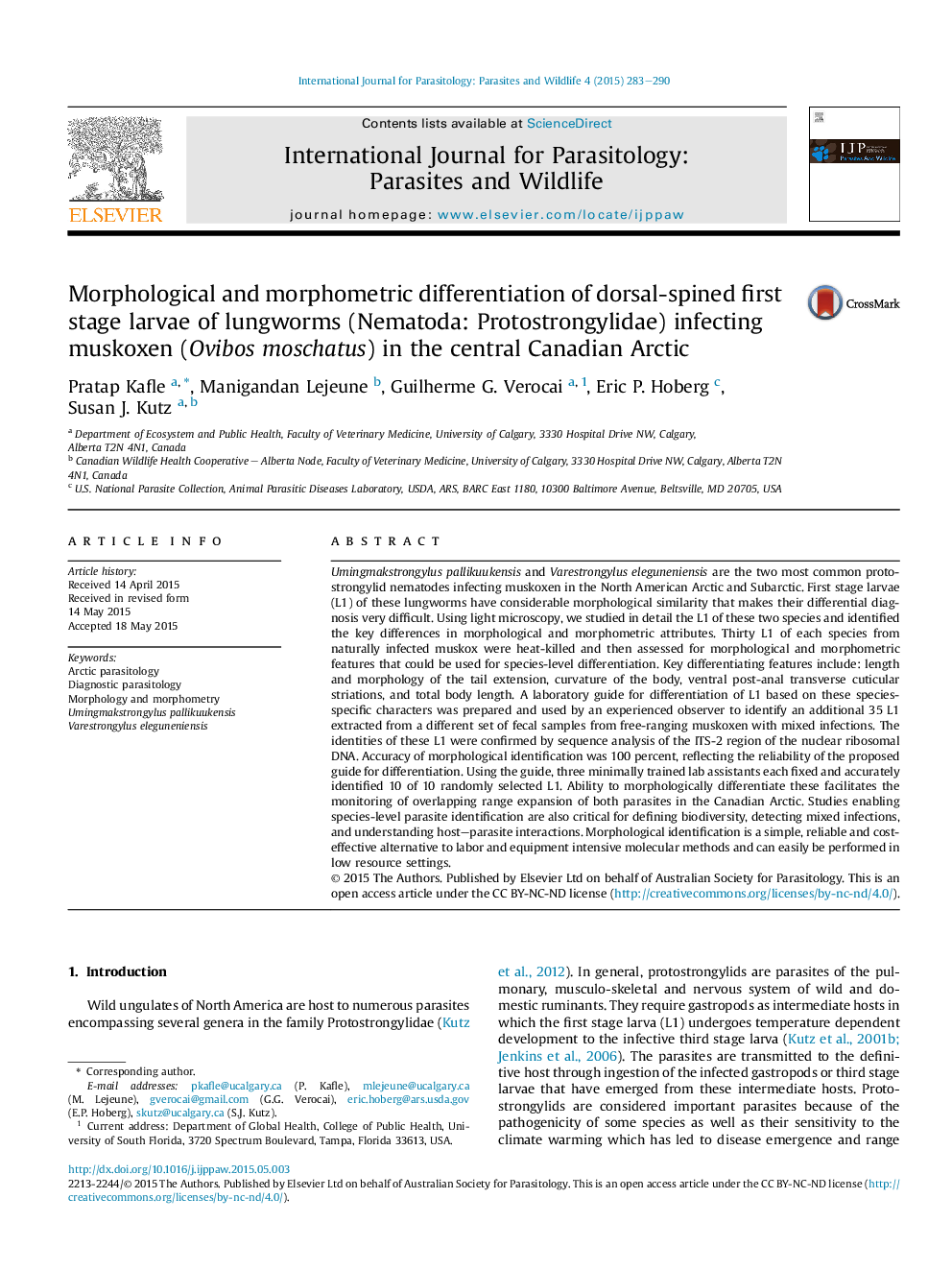| کد مقاله | کد نشریه | سال انتشار | مقاله انگلیسی | نسخه تمام متن |
|---|---|---|---|---|
| 2055184 | 1075733 | 2015 | 8 صفحه PDF | دانلود رایگان |

• Morphological differentiation of larval protostrongylid nematodes is challenging.
• We developed a guide for identification of first-stage larvae of muskox lungworms.
• Morphological observations were verified with sequencing results from PCR.
• We achieved 100% accuracy of the protocol.
• This is a rapid and effective alternative to currently employed molecular methods.
Umingmakstrongylus pallikuukensis and Varestrongylus eleguneniensis are the two most common protostrongylid nematodes infecting muskoxen in the North American Arctic and Subarctic. First stage larvae (L1) of these lungworms have considerable morphological similarity that makes their differential diagnosis very difficult. Using light microscopy, we studied in detail the L1 of these two species and identified the key differences in morphological and morphometric attributes. Thirty L1 of each species from naturally infected muskox were heat-killed and then assessed for morphological and morphometric features that could be used for species-level differentiation. Key differentiating features include: length and morphology of the tail extension, curvature of the body, ventral post-anal transverse cuticular striations, and total body length. A laboratory guide for differentiation of L1 based on these species-specific characters was prepared and used by an experienced observer to identify an additional 35 L1 extracted from a different set of fecal samples from free-ranging muskoxen with mixed infections. The identities of these L1 were confirmed by sequence analysis of the ITS-2 region of the nuclear ribosomal DNA. Accuracy of morphological identification was 100 percent, reflecting the reliability of the proposed guide for differentiation. Using the guide, three minimally trained lab assistants each fixed and accurately identified 10 of 10 randomly selected L1. Ability to morphologically differentiate these facilitates the monitoring of overlapping range expansion of both parasites in the Canadian Arctic. Studies enabling species-level parasite identification are also critical for defining biodiversity, detecting mixed infections, and understanding host–parasite interactions. Morphological identification is a simple, reliable and cost-effective alternative to labor and equipment intensive molecular methods and can easily be performed in low resource settings.
Figure optionsDownload as PowerPoint slide
Journal: International Journal for Parasitology: Parasites and Wildlife - Volume 4, Issue 3, December 2015, Pages 283–290